Complete Solutions to SHORT ANSWER TYPE QUESTION of chapter ORGANIC CHEMISTRY - SOME BASIC PRINCIPLES & TECHNIOUES of Class 11 book with complete answers and questions
| Class 11 | CHEMISTRY |
| Chapter | ORGANIC CHEMISTRY - SOME BASIC PRINCIPLES & TECHNIOUES |
| DINESH COMPANION CHEMISTRY | SHORT ANSWER TYPE QUESTION |
| Number Of Questions | 33 |
| Academic Year | 2023-24 |
Which of the above compounds from pairs of metamers ?
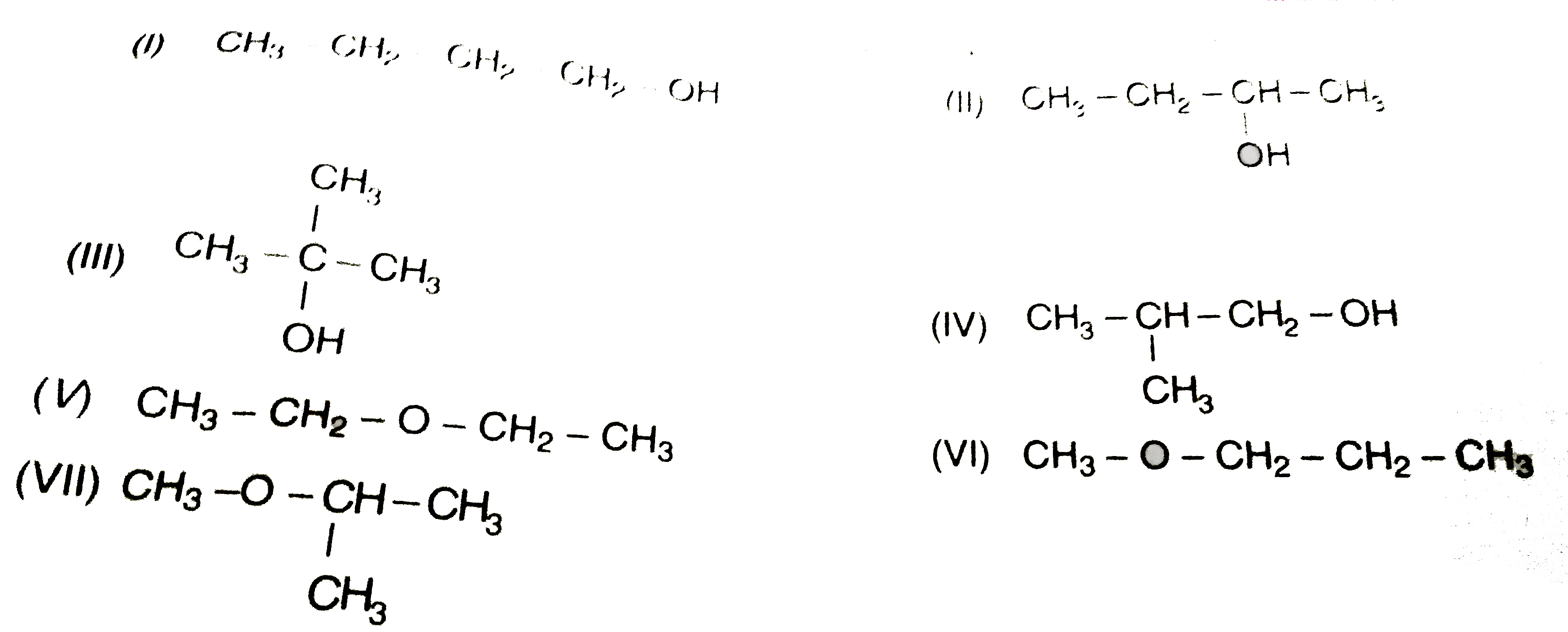
View SolutionIdentify the teritary alcohol and write its IUPAC name.
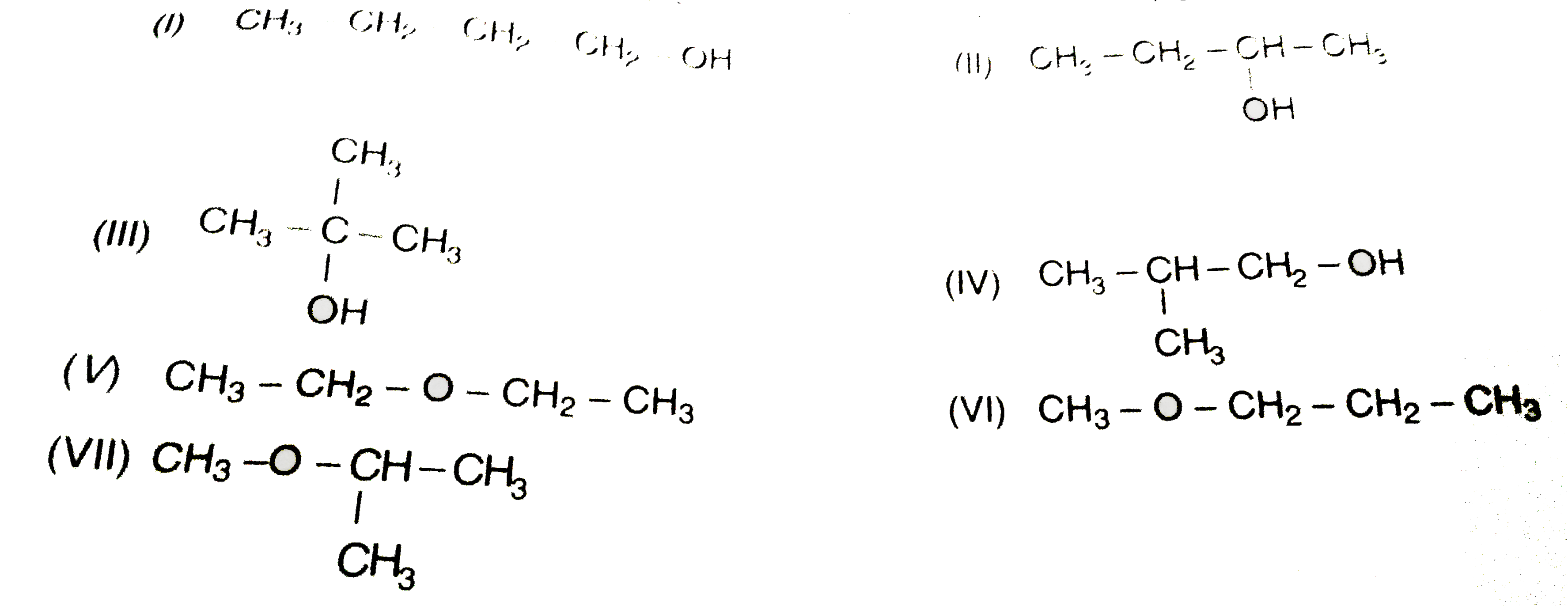
View SolutionIdentify the primary alcohols from the given list.
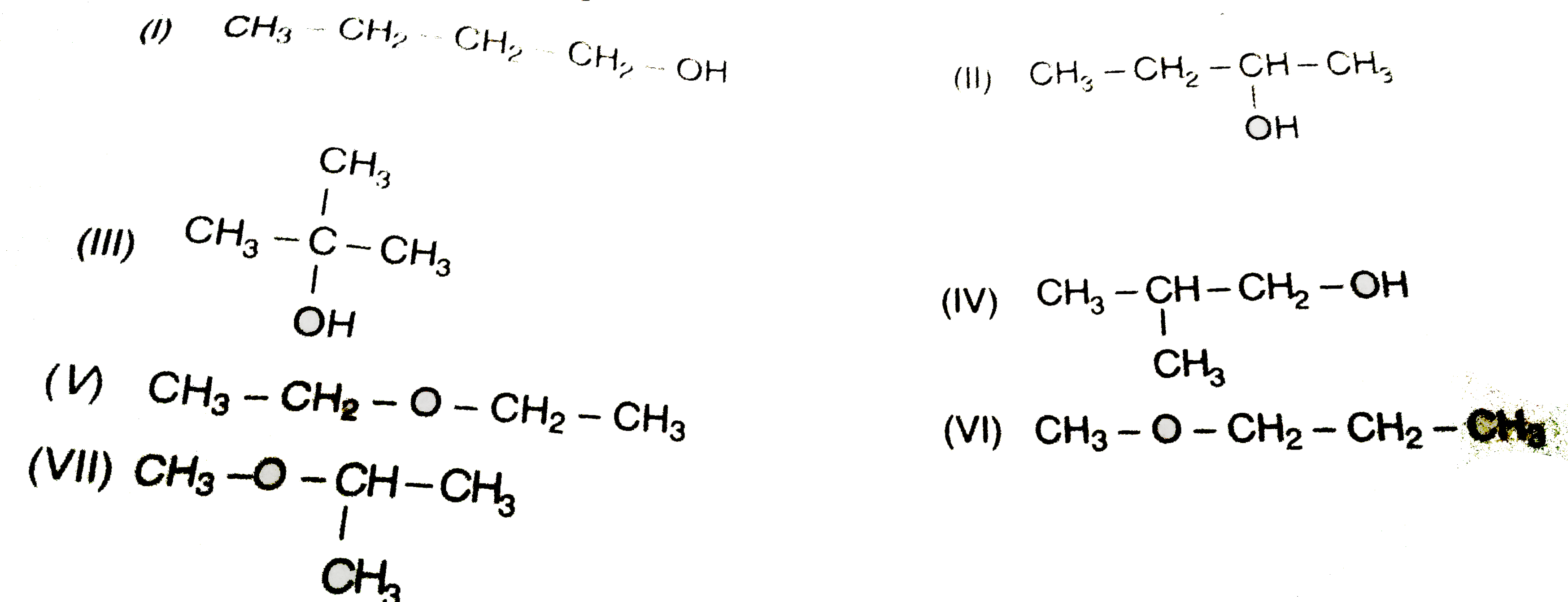
View SolutionWhat is the relation in all these compounds ?
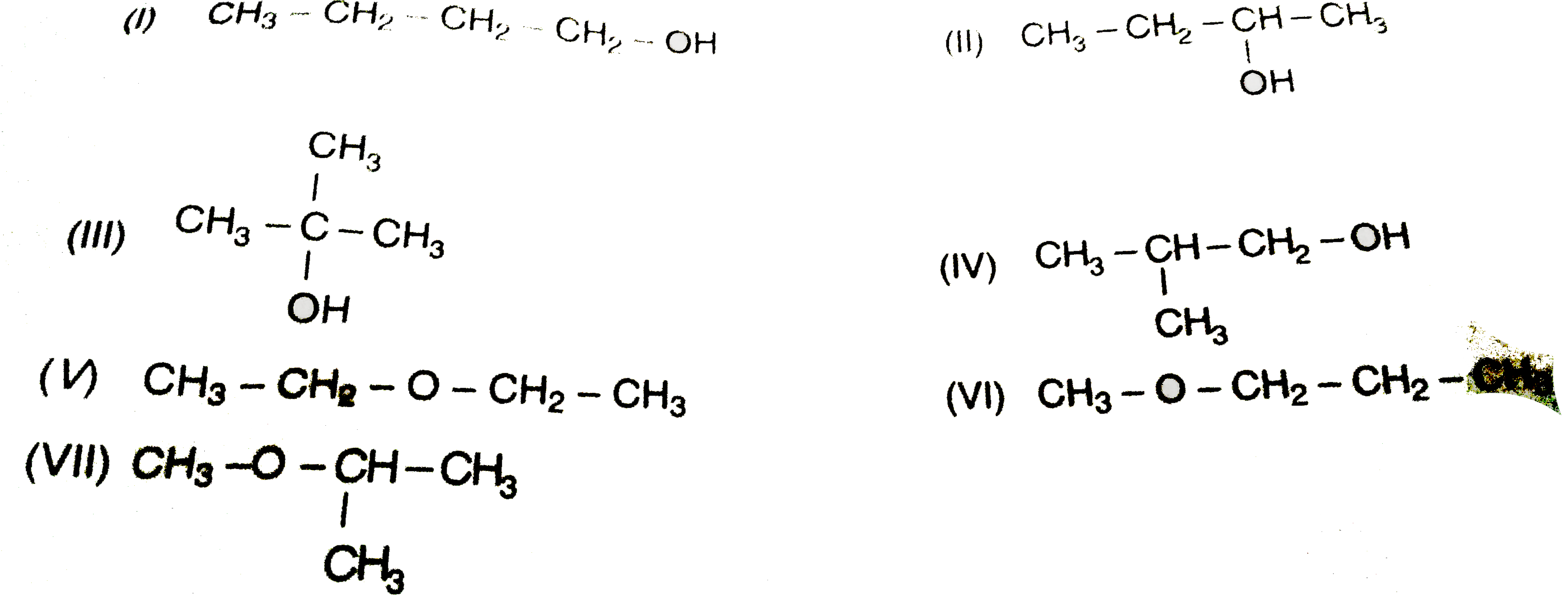
View SolutionFor testing halogens in an organic compound with `AgNO_(3)` solution, sodium extract (Lassaigne's test) is acidified with dilute `HNO_(3)`. What will happen if a student acidifies the extract with dilute `H_(2)SO_(4)` in place of dilute `HNO_(3)` ?
View SolutionWhat is the hybridisation of each carbon in `H_(2)C=C=CH_(2)`.
View SolutionExplain, how is the electronegativity of carbon atoms related to the state of hybridisation in an organic compound ?
View SolutionShow the polarisation of carbon-magnesium bond in the following structure.
`CH_(3) - CH_(2) - CH_(2) - CH_(2) - Mg - X`
View SolutionCompounds with same molecular formula but differing in their structures are said to be structural isomers. What type of structural isomerism is shown by

View SolutionWhich of the following selected chains is correct to name to given compound according to IUPAC system ?
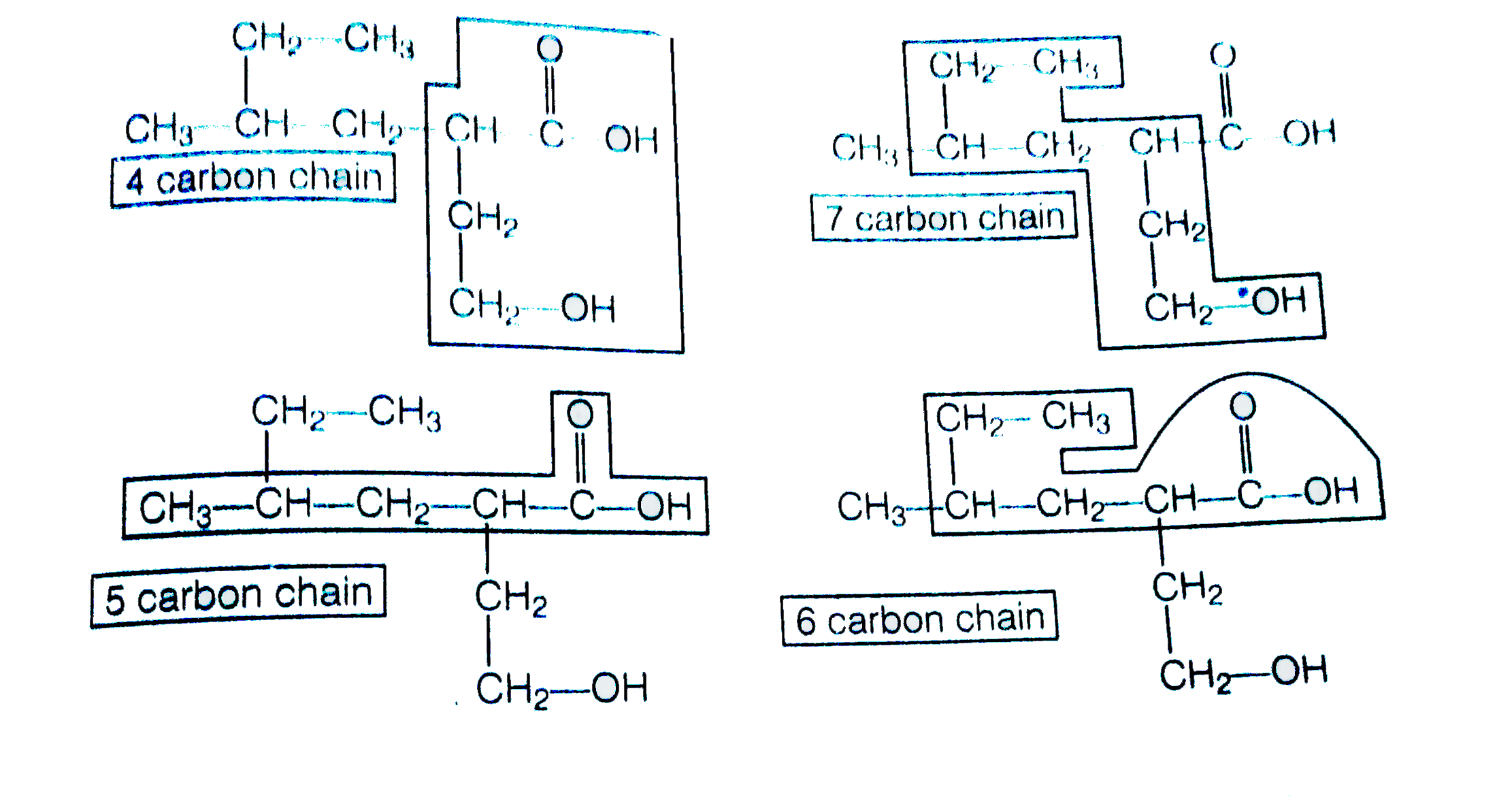
View SolutionIn DNA and RNA, nitrogen atom is predent in the ring system. Can kjeldahl's method be used for the estimation of nitrogen present in these ? Give reasons.
View SolutionIf a liquid compound decomposes at its boiling point, which method (s) can you choose fot its purification. It is known that the compound is stable at low pressure, steam volatile and insoluble in water.
View SolutionDraw the possible resonance for `CH_(3)- underset(..)overset(..)(O)-overset(+)(C)H_(2)` and predict which of the structures is more stable. Give reason for your answer.
View SolutionWhich of the following ions is more stable ?
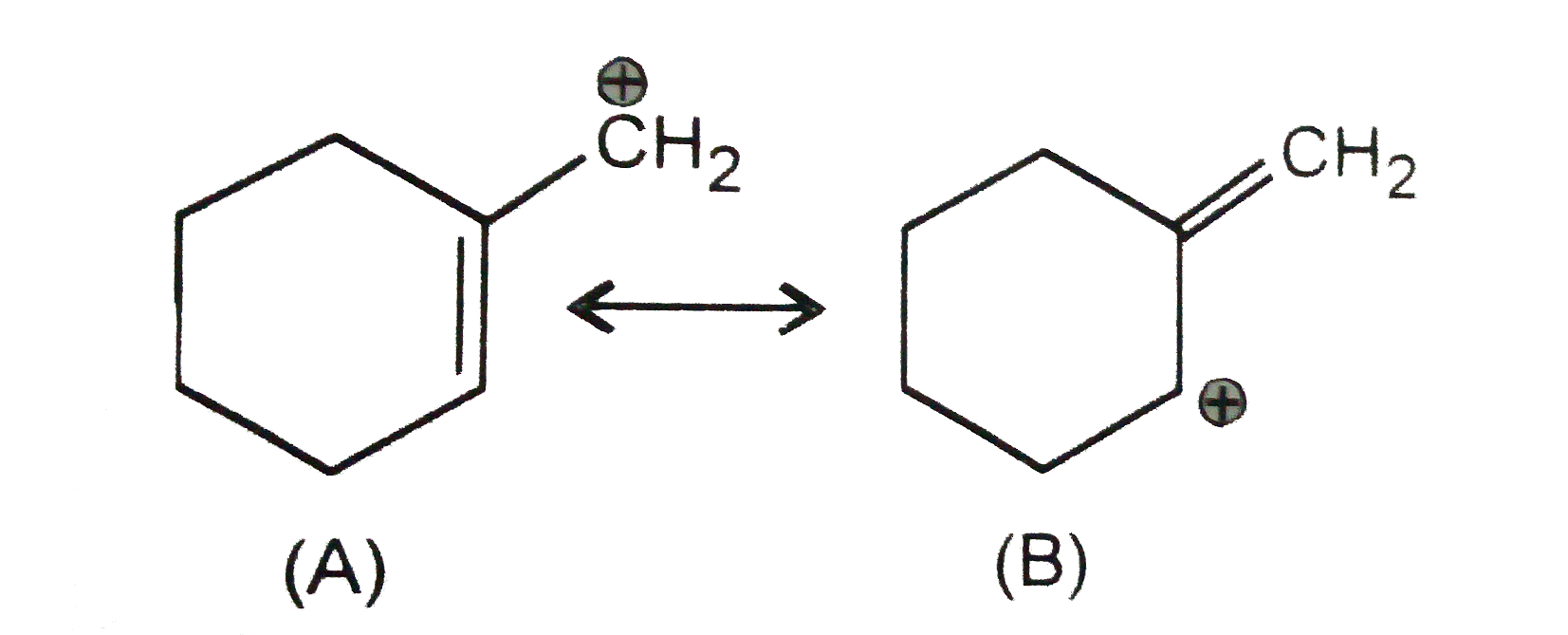
View SolutionThe structure of triphenylmethyl cation is given below. This is very stable and some of its salts can be stored for months. Explain the cause of high stability of this cation.
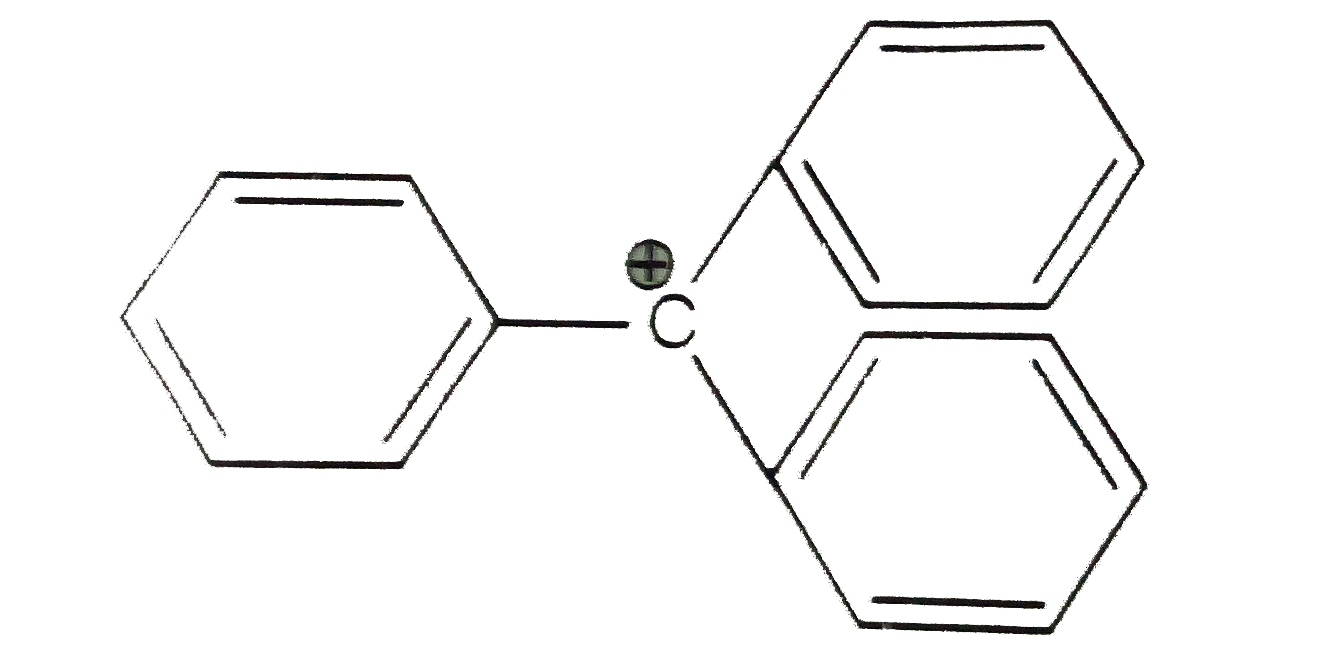
View SolutionWrite structures of various carbocations that can be obtained from 2-methylbutane. Arrange these carbocations in order or increasing stability.
View SolutionThree students, Manish, Ramesh and Rajini were determining the extra elements present in an organic compound given by their teacher. They prepared the Lassaigne's extract (L.E.) independently by the fusion of the compound with sodium metal. Then they added solide `FeSO_(4)` and dilute sulphuric acid to a part of Lassaigne's extract. Manish and Rajni obtained prussian blue colour but Ramesh got red colour.
Ramesh repeated the test with the same Lassaigne's extract, but again got red colour only. They were surprised and went to their teacher and told him about their observation. Teacher asked them to think over the reason for this. Can you help them by giving the reason for this observation. Also, write the chemical equations to explain the formation of compounds of different colour.
View SolutionName the compounds whose line formulae are given below :
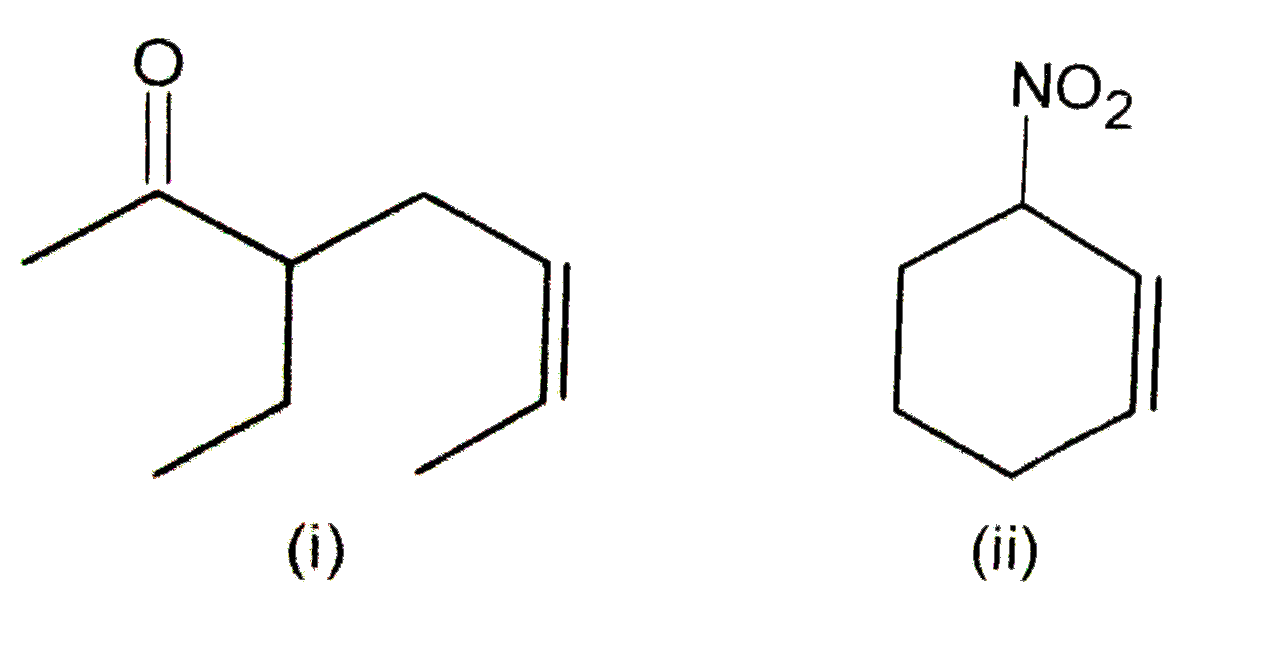
View SolutionWrite structural formulae for compounds named as
(a) 1-Bromoheptane
(b) 5-Bromoheptanoic acid
View SolutionDraw the resonance structure of the following compounds :
(i) `CH_(2)=CH-underset(..)overset(..)(C)l:` (ii) `CH_(2)=CH-CH=CH_(2)` (iii) `CH_(2)=CH-overset(O)overset(||)(C)-H`
View SolutionIdentify the most stable species in the following set of ions giving reasons
(a) `overset(+)(C)H_(3), overset(+)(C)H_(2) Br, overset(+)(C)HBr_(2), overset(+)(C)Br_(3)` (b) `overset(Θ)(C)H_(3), overset(Θ)(C)H_(2)Cl, overset(Θ)(C)HCl_(2), overset(Θ)(C)Cl_(3)`
View SolutionGiven three points of differences between inductive effect and resona effect.
View SolutionWhich of the following compounds will not exist as resonance hybrid. Give reason for your answer.
(a) `CH_(3)OH`
(b) `R - CONH_(2)`
(c) `CH_(3) CH = CHCH_(2)NH_(2)`
View SolutionWhy does `SO_(3)` act as an electrophile ?
View SolutionResonance structures of propenal are given below. Which of these resonating structures is more stable ? Give reason for your answer.
`CH_(2)=underset("I")(CH-CH)=O harr underset("II")(overset(o+)(CH)_(2)-CH=CH-overset(Theta)(O))`
View SolutionBy mistake, an alcohol (boiling point `97^(@)C` ) was mixed with a hydrocarbon (boiling point `68^(@)C` ). Suggest a suitable method to separate the two compounds. Explain the reason for your choice.
View SolutionWhich of the two structures (A) and (B) given below is more stabilised by resonance ? Explain
`underset((A))(CH_(3)COOH)" "` and `" "underset((B))(CH_(3)COO^(-))`
View SolutionWhat is meant by hybridisation ? Compound `CH_(2)=C=CH_(2)` contains `sp` or `sp^(2)` hybridised carbon atoms. Will it be a planar molecule ?
View SolutionBenzoic acid is an organic compound. Its crude sample can be purified by crystallisation from hot water. What characeteristic difference in the properties of benzoic acid and the impurity make this process of purification suitable ?
View SolutionTwo liquids (A) and (B) can be separated by the method of fractional distillation. The boiling point of liquid (A) is less than boiling point of liquid (B). Which of the liquids do you expect to come out first in the distillate ? Explain.
View SolutionYou have the mixture of three liquids (A), (B) and (C). There is a large difference in the boiling points of (A) and rest of the two liquids i.e. (B) and (C). Boiling point of liquids (B) and (C) are quite close. Liquid [A] boils at a higher temperature than [B] and [C] and boiling point of (B) is lower than that of (C). How will you separate the components of the mixture. draw a diagram showing set up of the apparatus for the process.
View SolutionDraw a diagram of bubble plate type fractionating column. When do we require such type of a column for separating two liquids. Explain the principle involved in the separation of components of a mixture of liquids by using fractionating column. What industrial applications does this process have ?
View SolutionA liquid with high boiling point decomposes on simple distillation but it can be steam distilled for its purification. Explain how is it possible ?
View Solution
SHORT ANSWER TYPE QUESTION questions and complete solutions for chapter ORGANIC CHEMISTRY - SOME BASIC PRINCIPLES & TECHNIOUES of S DINESH & CO CHEMISTRY (HINGLISH) of Class 11
All Exercises from DINESH COMPANION CHEMISTRY Class 11 CHEMISTRY ORGANIC CHEMISTRY - SOME BASIC PRINCIPLES & TECHNIOUES
- Assertion-Reason
- ASSIGNMENT
- CONCEPT BASED QUESTION
- Detection & Estimation of Organic Compounds
- Example
- Matching Type
- MCQB
- MCQS
- N.C.E.R.T.
- NCERT Exemplar Problems
- Problems For Practice
- PURIFICATION & CHARACTERISATION OF ORGANIC COMPOUNDS
- Purification of Organic Compounds
- SHORT ANSWER TYPE QUESTION
- Some Basic Principles in Organic Chemistry
- VALUE BASED QUESTION